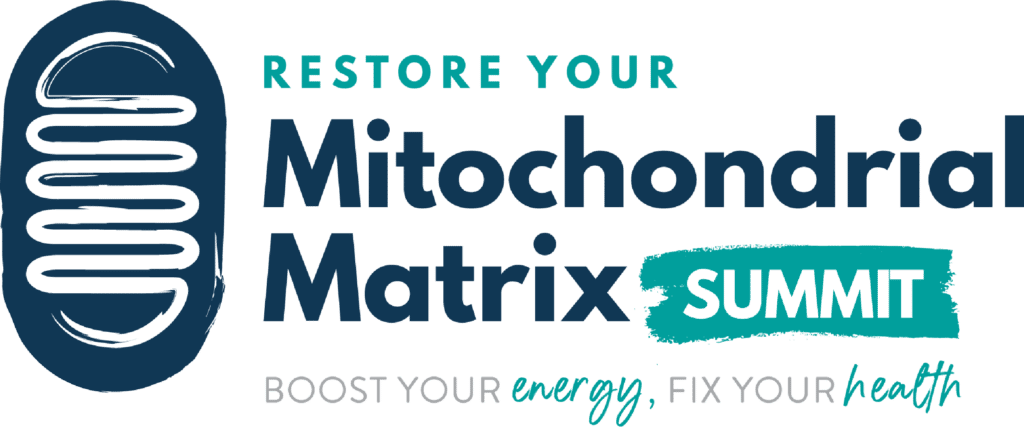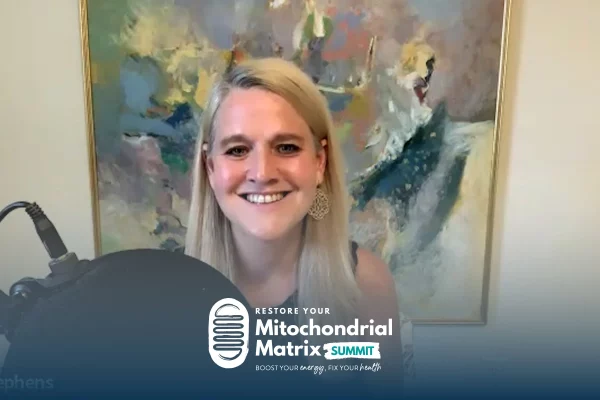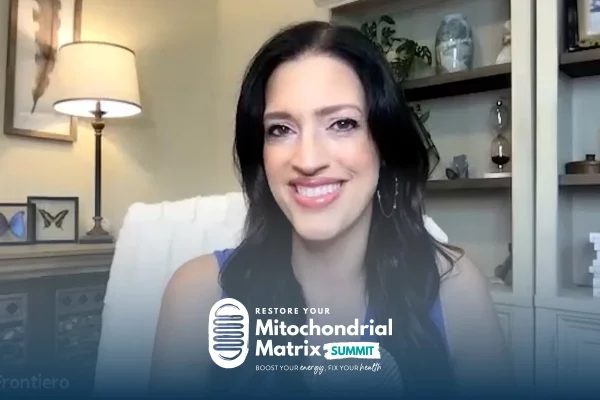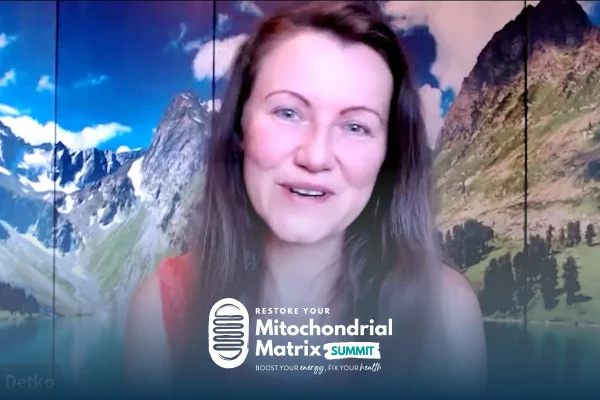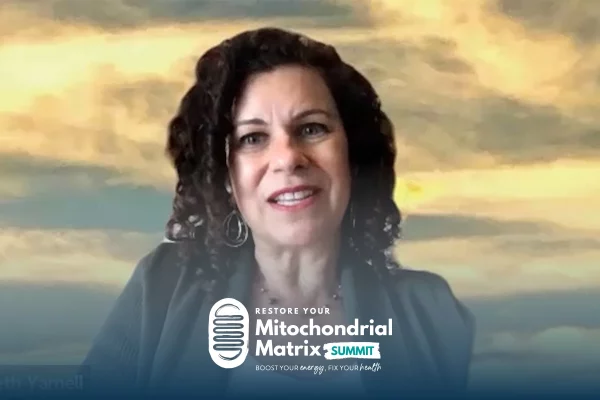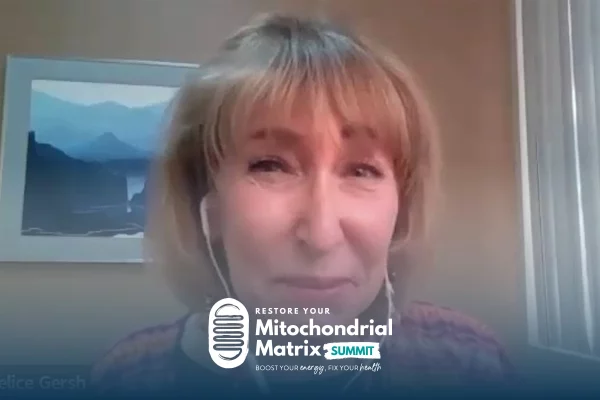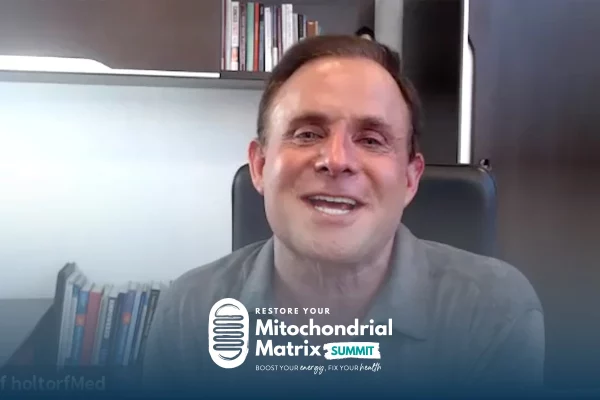Join the discussion below
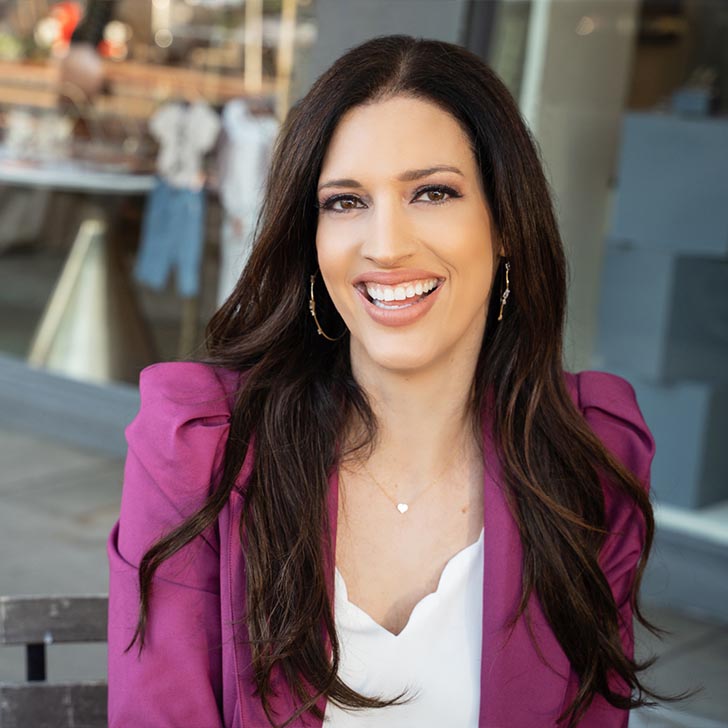
Laura Frontiero, FNP-BC, has served thousands of patients as a Nurse Practitioner over the last 22 years. Her work in the health industry marries both traditional and functional medicine. Laura’s wellness programs help her high-performing clients boost energy, renew mental focus, feel great in their bodies, and be productive again.... Read More
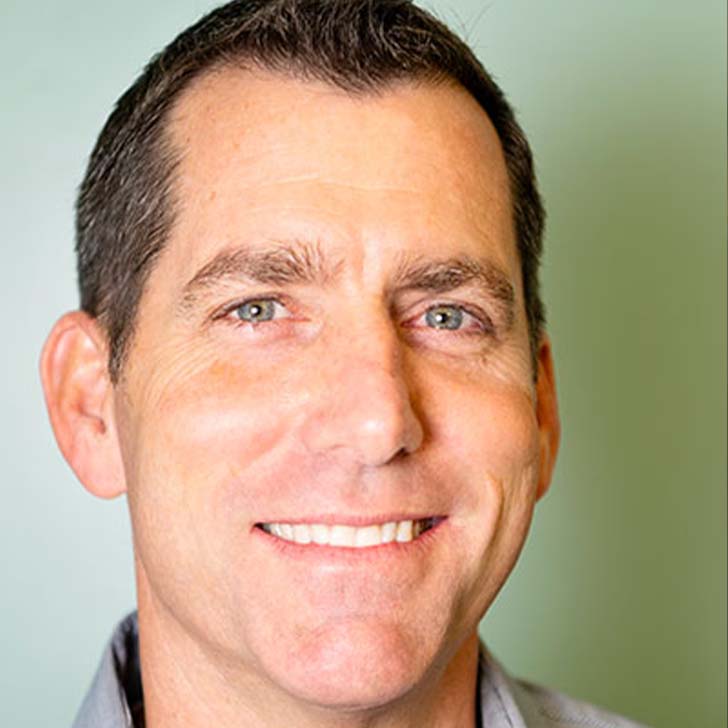
Dr. Todd A. Watts is a national board certified Chiropractic Physician in Idaho, and a Functional Wellness Practitioner. Many know him as the "Parasite Guy", but he also has extensive knowledge in Functional Blood Chemistry, Biochemistry, and in helping those with chronic illness overcome their struggles to restore their health.... Read More
- Uncover the key stressors to mitochondria, actions to support their recovery and products that speed the process.
Laura Frontiero, FNP-BC
Welcome back. You’re watching the Restore Your Mitochondrial Matrix Summit. I’m your host, Laura Frontiero. I am bringing you experts with fresh ideas and proven methods to help you boost your energy, and fix your health, so you can build the life you love. And today, my special guest is someone near and dear to my heart, Dr. Todd Watts. Hi Todd, welcome to the Summit.
Todd A. Watts, D.C., PSC.D
Hello Laura, good to see you. Really glad to be here.
Laura Frontiero, FNP-BC
Oh, me too. I just love the work that you do. I wanna introduce you to our audience, and then we’re gonna jump into all things mitochondria. And if we have time, some parasite discussion as well, would be amazing. But Todd, you are a National Board Certified chiropractic physician in Idaho, and you’re a functional wellness practitioner. And most people know you as “The Parasite Guy,” but you have an extensive knowledge in functional blood chemistry and biochemistry, and I love hearing you talk on these topics. And you also are the co-founder of Microbe Formulas and CellCore Biosciences.
My personal favorite supplement company, use them in all of my programs. And so I thank you from the bottom of my heart, my family does, my clients do, for what you have put out there in the world, ’cause you’re a supplement formulator, and you bring products to us that are just life changing. So thank you, thank you for all you do. Can’t wait to have you talk about all of this, and before we jump into the topic of mitochondria, can you tell us a little bit about how you got here? What brought you to this place, where you are just being such a huge influence in the world?
Todd A. Watts, D.C., PSC.D
Well, a lot of it started back when I was 28. I got Epstein-Barr virus, and that had me down for about 60 days. The doctor said I needed to take it easy for about a year, and it didn’t work for me at that time, as I was doing drywall painting. I was a remodel guy, and so I worked 70 hours, 80 hours a week, doing very physical labor. And so I did what I normally did, which was go to a nutritional store, bought herbs, ginseng, everything. That’s how I grew up, going to chiropractors and naturopaths. And so, going through my 30s, pretty healthy. Always been very healthy, very active. And then when I hit around 40, I had a lot of stress in my life. In 2008, the market crashed and affected a lot of people, throughout the United States. And I pretty much, I lost everything. So cars, houses, everything foreclosed on. And so I had a little girl, a 3-year-old and a 1-year-old, and didn’t have a way to support my family. And so with that stress came on a lot of health issues. So I ended up finding out I had Lyme disease, Babesia, and just a lot of allergies, headaches, migraines, joint pain, brain fog, brain word-recall issues.
There’s a whole variety of lists, severe fatigue issues, that I went through. And so my journey began then. I went back to chiropractic school at 41, to get my doctorate. And through that whole time period, my goal was to really be more on the naturopathic side of things. not so much to be a chiropractor. And so when I came out of chiropractic school, I specialized in helping people with chronic illness, autoimmune disease, and Lyme disease. That’s where I started my practice in. And also for myself and in my own journey, going up and down, cycling through this process, as those people that have had Lyme disease and issues in this stuff know, it doesn’t seem to go away a lot of times. It just, you feel better for a while, then you crash. And so, in my own personal journey, that’s where I learned about seeking out things, learned about Lyme disease, and more in-depth with parasite infections, toxins, mold illness, all these different areas that can affect someone’s health.
And with affecting peoples’ health, what suppresses mitochondrial function, how the role of the mitochondria takes place in all of this. And diving into modulating the immune function, immune system. And that, now here I’ll be 54 in a few months in September, and I feel better at now my age, since for the last 20 years. So it’s been great, because I don’t have seasonal allergies anymore. I don’t have headaches and migraines. I don’t have joint pain, and fatigue, and all these things that I went through in my 40s. It’s great to have my life back. I was surviving life and working through it, not thriving in life. And now I feel like I’m thriving, finally.
Laura Frontiero, FNP-BC
I didn’t know that story about hitting that rock bottom. I hadn’t realized where, where you were at with your health and your life. And this gives hope, right? I mean, here you are, the guy who is behind all of this amazing CellCore products and your huge practice and success. And I don’t think people realize that you have your own story there.
Todd A. Watts, D.C., PSC.D
Yes, that’s what drove me to figure all this out is because I was trying to get myself better. And then as I partnered up with Dr. Jay, I was working on trying to get her back. So Dr. Jay’s wife, Dr. Heather, had almost died a couple times of Lyme disease and other things. So I really helped her in her journey, restoring her health. And these products are what changed her life and got her back to where she lives in a high level of energy every day, so it’s been great to see.
Laura Frontiero, FNP-BC
Now there’s this big link between, I mean, much of what you do with your practice in CellCore is about restoring gut health, because you’re removing parasites and toxins from the body. A lot of it’s happening in the gut, but mitochondria health is absolutely central to this. And so that’s what I really wanna jump into today. Can you start with telling us what is the role of the mitochondria in the body, and as it pertains to clearing out toxins and infections? Why do we need these little guys?
Todd A. Watts, D.C., PSC.D
Well, I had the privilege in my doctorate program, teach biochemistry, first year biochemistry in the doctorate level. So, I love biochemistry, and the mitochondria is my favorite of it all, because it is the powerhouse. It’s what creates the energy, the fuel for reactions within the body. So when you think about it, to digest your cells, your enzymes need energy to make that go forward. To make hormones, it needs energy to make and create those hormones, to make neurotransmitters for function. How you feel, that ATP molecule is needed, for those enzymes to be powered on and move forward. To digest, same thing. To detox, to do all these, a lot of the functions within the body, need energy.
Not all of ’em, but I would say probably the majority. And so what role does it play? Well, that’s one of the roles it plays. The other thing is that ATP molecule outside the cell is utilized to signal the immune system. Like hey, something is going on here. We need to address this and take care of it. So what we’ll see is that that ATP molecule will leave, and when you get sick, you feel tired, because it’s not being utilized for the energy part, but it’s being utilized to help immune function. And then it also helps to create water, pure water in the body that helps the DNA and the RNA. So the end metabolite of the mitochondria, the electron transport machine, we produce an electron and free radical that’s bound by oxygen and goes through a process that creates water. So that’s really, really important in the body.
Laura Frontiero, FNP-BC
Wait, wait, wait Todd, wait. Are you telling our listeners that drinking water isn’t the only way we get water?
Todd A. Watts, D.C., PSC.D
That’s right, absolutely. The mitochondria make it and it’s amazing, because think about this. We think, oh, there’s a mitochondria for cell, right? But no, it’s not right. In your muscles, you have 500 to a thousand mitochondria per cell. That’s every single cell. And the liver is about 2,000. And the heart, to 5,000. And the brain, 10,000 mitochondria per cell. There’s a huge need in your eyes and your brain, and your nervous system for mitochondria. Massive, because of the amount of energy it takes to produce and to do that. There’s one part, and research shows, substantia nigra has up to 2 million mitochondria per cell, crazy numbers. So there must, since there’s many mitochondria per cell, it must play a very important role in what really goes on within the cell versus other organelles that are in the cell, and the function of that. So there’s multiple roles that it does play, and we can see it, especially in the whole immune system and self danger response too.
Laura Frontiero, FNP-BC
So absolutely, what I’m hearing is foundationally, your mitochondria have to be in order for you to function, and can you talk a little bit into this? You need to have mitochondria function in order to heal. And this is one of the things that I learned from you and from just being a CellCore practitioner that in my protocols, when I’m working with people, if I don’t support mitochondria function, I can actually drop their energy and make them feel worse.
Todd A. Watts, D.C., PSC.D
Exactly.
Laura Frontiero, FNP-BC
So, and I think this is a huge missing piece in a lot of American functional medicine, is people just go for killing, killing infections, killing bacteria, killing parasites, without supporting the body and the mitochondria. So can you talk about that, because you actually need this to heal faster, to heal successful, to heal long term? Talk about that.
Todd A. Watts, D.C., PSC.D
Yeah so, when you’re looking at, you want to function, you want your liver to work really well, then the mitochondria needs to be producing energy, because the liver uses a lot of energy to be able to produce. 70% of the reactions that occur in the body, occur in the liver. So especially for metabolism, digesting foods, and when you’re not eating, to get energy for the body comes from moving, comes from the liver. The liver metabolizes glycogen, which is a sugar storage and metabolizes the fat, and produces, allows our body to produce energy from that. So you want optimal function, the organs have to have energy to do that. And we don’t think about it. Like, oh, I’ll just kill the organism that’s affecting it. Not thinking, well, you can kill all day long, but it’s gonna keep coming back unless you bring the immune function up. And so Dr. Lesley, he used to use this whole hand thing here, like, okay, there’s Lyme disease.
And when you have these infections that are really elevated, you need to bring ’em down. You can knock ’em down with all these herbs and people use antibiotics and different things, but if you don’t bring the energy production and immune system function up, which is really going back to mitochondria health, then it’s just gonna come back again. It’s gonna go elevate. So then it’s this whole process where they’re constantly trying just to kill lyme and kill bugs, and viruses and everything else, when in reality, it’s not that at all. It’s, really it goes back to, it’s an immune imbalance. And it could be a mitochondria function. What’s affecting that? And I can go into all the different areas of where that can apply, but there’s two ways we make energy. One, we make energy through substrate level phosphorylation, which means that it’s just glycolysis.
We make a little bit of energy through glycolysis. And the end of glycolysis is a molecule called pyruvate. Pyruvate then enters the mitochondria, and then the whole process goes, Kreb cycle, electronic transport chain. It means, basically we can start making ATP there. And we make a lot of ATP in there. And that requires oxygen. So if we can’t get, if we don’t have the oxygen and we have problems in the mitochondria, then it goes back in. Pryuvate’s knocked, it’s pushed back out of the mitochondria. And it it’s converted to lactic acid. Lactic acid, we’re familiar with, right? You sprint, you run out of energy quickly, you get muscles burning. That’s a simple way of looking at it. So it’s anaerobic versus aerobic respiration, meaning without with oxygen or without oxygen. Optimally, for optimal health, antiaging, optimal performance, for those that are sick, whatever it may be, you want to do as much in the anaerobic respiration or oxygen based type of thing, which means you have to have optimal mitochondrial function. And so then, you have to look at what’s affecting that? Why would the mitochondria not be optimized?
What would be creating that from not working? And it goes back to, number one is toxins or toxins or toxicants. We’ll refer on this as environmental toxins and chemicals are known as toxicants. I’m just gonna refer to ’em as toxins in general. Toxins are also based from microbials. So fungus, candida, bacteria, lyme, a variety of parasites, all produce byproducts or toxins, and then they can suppress or create free radicals and oxidative stress within the mitochondria in the cells in general. Damage cell walls and combine under receptors, displacing optimal function of cell signaling and what needs to happen there. So, you look at the very beginning. If you don’t have enough oxygen in your cells, then you’re gonna push everything back to lactic acid. If you have oxygen, then you can look at, okay, these toxins can inhibit enzyme function. And the first part of that process is taking pyruvate, converting it acetyl CoA, and in a three step enzyme process. And in there, that’s where heavy metals, environmental toxins, glyphosate, and stuff can inhibit those enzymes, and then you don’t make acetyl CoA.
That then goes into the mitochondria, or it goes into the Kreb cycle, which then also can be inhibited by a variety of toxins or heavy metals and chemicals. And then as you go, the whole objective in there, in the Kreb cycles, make two metabolites, and those are in NADH and FADH2. And the benefit of those molecules are two things. They’re gonna give an electron and a hydrogen to the electron transport chain, which at the very end, the whole point, I know this is a biochemistry thing, so I apologize. I’ve been talking over people’s head here, but the whole point of this is to take phosphate and then attach it to ADP, to make ATP, and now you have your fuel. But when you understand this at a deeper level of what’s happening, and this is how I look at it in the formulation process, and what I need to fix and how I need to fix things versus just going out like, oh, this is good for the mitochondria, and then put a product together, because this is what supports the nutrition of it. And it doesn’t really have to do with nutrition, in my opinion. It has to do with the toxicity. Toxins create deficiencies. It’s not the lack of food, it’s toxins create deficiency.
Laura Frontiero, FNP-BC
Let’s highlight that. Sorry, sorry to interrupt Todd. I really wanna highlight this right now, because there’s gonna be a mix of practitioners viewing this. There’s gonna be a mix of practitioners and patients, and we’ve been taught that mitochondrial dysfunction is nutrient deficiency. And so this is something really important to highlight, and I wanna make sure that everybody hears this, because this was even new to me in my training. It was all about nutrient deficiencies, replacing cofactors. And so say that again, that it’s not a nutrient deficiency.
Todd A. Watts, D.C., PSC.D
No.
Laura Frontiero, FNP-BC
And can you explain how the toxin blocks the mitochondrial function? Why is that happening?
Todd A. Watts, D.C., PSC.D
Okay, so it’s not a nutrition deficiency caused by nutritional deficiency, meaning they’re not eating food. They’re not starving themselves. It’s not from a taking a lack of vitamins. It’s from a toxin that’s creating a wall, or blocking it, or paralyzing, essentially inhibiting an enzyme from working. So an example of this is, the whole objective of these nutrients, so of the Kreb cycle is to get hydrogen, or proton, and electron, ’cause that’s what goes over into the electron transport chain. Electron goes through this process and the hydrogen goes through the other side to create this whole gradient so that we can attach at the end, phosphates ADP to make ATP. So what will happen is these toxins will come in to say complex one of the electron transport chain and what’s supposed to happen in complex one is that that electron’s supposed to go, or the hydrogen is supposed to go through that complex from NADH.
So NADH gives that proton, it goes to the other side to help this process. FADH2 gives a hydrogen, a proton, that is supposed to go through Complex II to do that. What will happen is those will be blocked and you can’t push that hydrogen through and electron then won’t go across. Another thing is that a toxin can’t inhibit CO, so you hear CoQ10. So there’s Coenzyme Q that will go across and carry that electron across it. And then cytochrome C is another one that will carry from those, from Complex III to IV. Complex I and II to Complex III is the CoQ ubiquinol that will carry that electron across. So if that’s tied up due to a toxin binding or inhibiting it, then we’re trying to give it all these nutrients to help out, and that can help, but it’s not solving the problem.
It’s getting to what I call foundational medicine, not functional medicine. Functional medicine is like nutrients, deficiencies. It helps the palliates, but it’s not getting to the core issue. It’s not core or root cause medicine. Foundational medicine, which is what we’re looking at, is looking at there’s a toxin or toxicant inhibiting this process causing free radical oxidative stress, and then causing all these problems. Really it’s just, the whole point in nutrition and nutrients is to create charge particles, ’cause that’s what we’re dealing with here. The three main charge particles and all this mitochondrial stuff, the whole point of it, is to create protons, electrons, and then have oxygen to bind the final, to bind the electron at the end, so we don’t have free radicals creating all those problems. It’s that simple.
And so when I’m, when I’ve built products and some of the things that you’ve worked with, with phenomenal results, is understanding these enzymatic processes is doing exactly that. So let’s give high doses of electrons, hydrogen, and oxygen. And so what happens is when oxygen binds onto the electron at the end in Complex, after Complex IV, it goes through this process now. That this is where we hear glutathione. And glutathione at the end will donate a hydrogen to hydrogen peroxide because oxygen gets converted on over to hydrogen peroxide and then to water in this process, or hydroxy ion, and then water. So the goal is water at the end, because that’s healthy for the cells. The other things are oxidants or cause oxidative stress and can be damaging to cells in the body. So glutathione donates a hydrogen and then is in oxidative state, and then from there receives a hydrogen is reduced, and then back.
So glutathione, when you consume it, does not give that. It doesn’t barely make it through hardly even the body at all. It’s mostly in the gut, and possibly in liver area, but mostly in the gut, according to research. And so what we need to do is just give charged particles to redo that. It’s called recycling, glutathione recycling. So how do we recycle it? The key is to do that. So in the cells of the mitochondria, in the brain, and everywhere else, you need charged, highly charged particles that will do that. And even in the liver. When you look at the liver in phase one of liver detoxification, it’s called the Cytochrome P450 enzyme.
Go, if you’re a practitioner, go look it up. Look at the whole process, it’s a multi-phase process. And in every one of those reactions, you either need an electron, a proton, or an oxygen molecule. So it gets to be that simple. So how can we give the body charge particles that it needs to do that? And this is what CellCore is all about, is giving those nutrients, the carbon, hydrogen, and oxygen that the body needs to repair, to metabolize, to create energy, and to then remove and clear these toxins and infections from the body. It’s the core foundational part of what medicine is all about. And then from there, you can bring the nutrients in to help with other processes, but you know, you’re gonna be on nutrients forever if you don’t address the core root issues here.
Laura Frontiero, FNP-BC
Right, so to summarize for patients watching, for practitioners watching, if you’re not addressing the toxins, and all you’re doing is giving the cofactors to support mitochondrial health, you’re gonna be on a never ending hamster wheel of trying to support, but not ever getting to full functioning, full healing. Like when does it ever end? When do you get to come off of those cofactors? You never, if you don’t solve the toxin problem.
Todd A. Watts, D.C., PSC.D
And they’re only gonna be so effective as well. I mean, they’re only gonna work so much. You’re never gonna get over all the issues you’re having anyways.
Laura Frontiero, FNP-BC
And so Todd, do we all have toxins?
Todd A. Watts, D.C., PSC.D
Yes. It’s in our food, water and air. I mean look at the skies. Right now I can see them spraying chem trails in the skies, and it’s just, it’s in your water system and supply. If you’re not using distilled water. Then you’re drinking water that probably has toxins or radio active elements from radium infused in the water. If you’re eating food, it’s almost impossible to get clean food now. So it’s really important, especially to get your meat from local sources that you go get, after its butchered, put it in your freezer. You don’t want to get stuff like that at the store, because it’s been sprayed with chemicals to keep it from, oxidizing and turning colors and everything else going bad. I highly recommend eating more local organic grown food from people you know, versus getting stuff at the big box stores. Organic as much as possible.
Laura Frontiero, FNP-BC
Absolutely. Can you, can you talk about distilled water? This is something that I’m constantly teaching in my programs, and people spend a lot of money on water systems and they don’t get out the radioactive elements. And there’s this whole myth that, your mom tells you don’t drink distilled water, it’s gonna leach your minerals out of your bones. I mean, so talk about that for a minute, because people look at me cross eyed when I tell them to drink distilled water. And thankfully you build enough trust with people, and you show them what you’re doing in your life. So talk about that for a minute, and also talk about the minerals and what kind of minerals we actually absorb and what kinds we don’t, because I think it’s really important for people to understand this piece, ’cause they’re drinking their toxins.
Todd A. Watts, D.C., PSC.D
Yeah, they are. So there’s a lot of systems out there and they help. They’re not perfect. So you see RO and a lot of filter based ones, they don’t clear out all the toxins. There’s 86,000 chemicals that are registered with the EPA. 40 some thousand, I think 42,000 plus that are currently active and being utilized. The biggest test for water and is the one we saw, we looked at tons of 109 chemicals. You don’t see a test that has 42 or 86,000 tests for chemicals, so you can’t really test all that. So how do you get all the chemicals out? Well one, the filtration systems only last for so long, and they only get, they’re only effective, they’ve only been studied, most of ’em, up to 50 gallons. You start looking at lot of carbon based filters and then there’s just weaknesses on pretty much all the other systems.
So the only thing we found is distilled water that gives you clean, pure water, because it changes the phase of the water and then goes, and then it goes back to a new phase. So you go from water to vapor to water again. And that’s really the Earth’s natural way of doing it, of really cleaning and purifying water. So when I was in this journey and looking at how to help people out, I was man, where do they get exposed these chemicals? They’re getting continuous exposure. And it was the water supply. And then you look at radioactive elements. So then you start to work and look at, okay, what is even radioactive elements? I learned this through clinical experience on working with difficult patients that didn’t seem to get better, that were sensitive to everything and especially EMFs and stuff and mold. and like, okay, what is going on?
Why can’t we get them better? Well in my research, looking at it, one of the gals like, hey, we’ve looked at these rime’s tests, it’s like radioactive materials. I looked and I went through an energetic tester on a bunch of different things. And radium came up. I’ve never heard of radium. Well, it’s because we don’t test it in labs. It’s only tested by the EPA. It’s in, 177 million people have it in the water, municipality water. The Environmental Working Group, they did a study, they pulled information from the EPA, the EPA has a working map that you can see, go over your town and see what it is. There’s full on radium belt in Wisconsin, a ton of it in Illinois, 80% of Texas has radium in their water. Like I said, almost half the United States has it in their municipality water. The other thing with municipality water is I’ve had patients, this one gal was a pharmacist. Her husband was an engineer, very scientifically minded. And, but it’s just– it’s like weird that they both had issues. So I’m like, it gotta be your water, so let’s test your water.
So they tested their cabin thinking it could have been the well water. Wasn’t the case. Tested their municipality water in their hometown, they’re up in the Northeast. And it tested positive for nematode larvae, meaning that she had probably roundworm larvae or sorghum larvae in their municipality water, which was shocking to me. So that was weird. So we tested the neighbors water and a couple other neighbors, and then a business that was downtown. All of them were positive. So it could be in our water supply at times. I don’t say it always is with people, but it’s important to have clean water. Now the type of minerals, the type of minerals you’re getting.
So here, here I look at what water does to my shower, shower window, my sprinklers do to my windows outside. It creates, they’re hard water mineral deposits. That’s not healthy minerals. Those aren’t minerals that are bio available for our body. It’s like going out there and scratching rock, bringing it down and drinking it. It’s not bio available for the cells. You get your minerals, not from your water. You get your minerals from your plants, plant derived minerals, okay, is what are, is what is bio available to our cells? So if you want more minerals, eat more plants and that’s the answer. You don’t get it from your water. You don’t, you know you don’t get it from the rock outside, and eating dirt. It’s not the right kind of minerals. You want organic based plant derived minerals. Meaning, organic meaning attached to carbon that’s been metabolized by bacteria into plants, that plants then can give to you in a form that is available for your body.
Laura Frontiero, FNP-BC
Excellent, and you have a product, a liquid mineral product called, called, there’s a couple different ’cause you own a couple different supplement companies.
Todd A. Watts, D.C., PSC.D
Yeah, CT-Minerals.
Laura Frontiero, FNP-BC
CT-Minerals. And we put that right into our water and it restructures the water. So talk about that for a second because people get nervous about, well, my water’s not structured after it’s distilled. So it restructures the water and it gives you plant-based minerals. So talk about that for a second.
Todd A. Watts, D.C., PSC.D
So it’s a Fulvic dried mineral. So Fulvic acid is a plant derived molecule from ancient molecule. It’s from soil from years ago, it’s cleaned, cleaned up, and bronzed. Ours is highly energized. So it’s at a very high electrical connectivity and pH that is very low to help provide you with lots of energy within your cells in your body. Very stable molecule. And it has all the trace minerals that come in these type of nutrients. So that’s where we put it in there and it helps to then really bring life to that water. But really water is composed of two main molecules and that’s hydrogen and oxygen, which your cells need. So it’s one way we get oxygen and hydrogen to your cells is through water, not just through air. So, it’s interesting. I was talking to the scientists, things like, well it’s dead water.
Where does the water go? ‘Cause somebody drinks it and you cut their body open up, And you say, if you were to cut their body open, you wouldn’t just water pouring out of their body. It turns into gas and it’s utilized in the cells. And it’s just, somebody said something about it being dead. And then, and then just becomes stuff like adrenal fatigue, becomes popular and then everybody does it, and there’s no science behind it. And you go research it and it’s really, oh, it’s a mitochondrial problem, not adrenal problem. Adrenals are having problems and probably all your other organs are having problems too. So it, yeah, you go start to do the research and it’s been used for tons of years.
It’s the way that earth also does it. It takes water up from the sea, goes through a process and it rains pure water. So, yeah. It’s just something, you know what the best water? This is what I say, the best water is pure water, and that’s clean without toxins. And that’s distilled water that I’m drinking. Distilled water, that I’m drinking, I’m eating vegetables and fruits and things that are gonna help give me nutrients. And I’ll put trace minerals in there to be sure I’m getting plenty of trace minerals with hydrogen.
Laura Frontiero, FNP-BC
Thank you for breaking that down. I think this is a, I know it’s a total side shoot and it’s a really important topic, and you explain it so well. So, we’ve talked about some, we’ve talked deeply about mitochondria, the physiology of mitochondria, what happens biologically in the body, why it’s important for healing. Something that I think would be really, you’re really an expert in this is, and I’m gonna totally shift gears on everybody listening, but I’d love for you to speak into the emotional trauma part of mitochondrial dysfunction. I know you focus on this and it’s really important. And it’s something that doesn’t get a lot of lip service out there.
Todd A. Watts, D.C., PSC.D
Yeah so, I learned a lot of through clinical practice that was like, man, these people are getting better, but they’re not getting better. They don’t feel any different. So it is when you really have to dive into why are they changing? Why are they so sensitive? Why are they so reactive to things? And there’s usually is an emotional, spiritual trauma thing that’s happened with them. And so what we experience with emotions, emotions change physiology. They do. The type of hormones are expressed are based off how you think, how you think is how you are. And we’ve heard this, but actually it really happens. You think about, you go to an experience and you’re at a football game or something. I love sports.
So you know, you’re excited. It’s like this energy and emotion pumps through your body, ’cause you’re at this event, that’s creating emotion. You go through a horrible traumatic event and that could suppress and just create severe suppression of stuff. So we have to address this and shift these emotions, because they’re stored. So I feel like there’s emotional trauma can be stored in the body. There’s a lot of techniques that help to address this, but we created a product that’s gonna be launching here soon that helps just to up regulate the vibration and the energy in the body and the aura. And to release some of these emotional traumas as people are working through this process. So it is similar to people talk about limbic stuff to, to help with some of the responses that they get. It shifts the brain. It gets stuck and then you can’t move forward. And so emotions are a big part of that. Even in my own journey.
You know, one of the things I did that really helped me break through the process was I started listening to like success and motivational videos, and overcoming things. Every day just get that mindset, I’m a warrior to get through this, because I think it really happened in one day. I just like I came home from the clinic one day and I was a surviving life. And I’d come home, I’d crash for a couple hours, get up, eat dinner with kids. I have four kids, two girl and two boys, and get up, get ’em get ready, get ’em ready for bed and then crash again. I just, you know, I was exhausted and so fatigued. And so this stuff started helping my mindset and like okay, I need to push through to figure out the answer. And it started actually, I started getting energy just from the way I was thinking to do this. I remember it comes to the standpoint of sometimes experience you have in your life that you have to make this change. For me, it was one day, because being a dad, is like, you’re a parent. You love your kids. You wanna be there.
You wanna just like be the best parent. My dad was there playing baseball. I grew up playing baseball as a kid in the 70’s, 80’s. And my dad was there as a coach. He was always supporting me through that process. I wanted to be that dad that always was there for my kids, pushing them, coaching them along. And I couldn’t. I literally couldn’t. And so the day came, I got home. My son was five. My daughter was nine and they were out in the front yard playing baseball with my next door neighbor. And I lost that moment of being that dad that got to do that. And that was so important to me. ‘Cause I used to go to the Padre games in San Diego growing up. And it’s like, I love sports. I wanted to be part of that. And it just, it’s like a stab in the heart, and it’s like, okay, I wasn’t the one that throw the ball with my kid. That was my next door neighbor. I wasn’t the one that pitched the ball with my kid. That was my next door neighbor. That’s when it really shifted my mindset. And mindset is a huge issue when it comes to chronic illness, when it comes to overcoming emotional trauma is letting go.
So as I, CEOs over my company and over my clinic as well, working with 130 team members, one of the things I’ve taught people in this process, and I teach each of my patients or clients, is there are three main things. One is you gotta have humility. You gotta be teachable to learn and understand that we don’t have all the answers. Even as a doctor, I don’t have all the answers. I’m always learning. I’m always pushing. I’m open to receiving different sources. Two, you need to have grace. So you gotta have grace for yourself. You need to have grace for others. Let people make mistakes. They can’t be perfect. Yourself, you gotta have grace for. And this really applies really well in the workplace, but also in your own personal healing journey. And three is forgiveness.
So having forgiveness for yourself and for others, because if you hold onto things, then you’re not gonna be, you’re gonna create physiology that’s bad. Harboring bad feelings towards others is, there’s not gonna, a lot of times, allow you to move forward in health, in optimal living, in optimal life. It’s like, it doesn’t matter. The Lord had forgiveness and grace for us. We need to do the same thing for ourselves, right? And for others. And so many times I, somehow I talked, I attract a lot of Christian based people into my clinic over the years. And I feel like a lot of times we don’t understand it enough. We believe it and tell everybody about it, but applying it to our own selves, is really hard. And having that grace and that forgiveness for ourselves can be one of the hardest things out there. So we have to come to that point where somebody else has done that for us. And that higher power, whatever you believe in, for me, it’s Christ, for other people, it’s a higher power. There’s something, higher energy out there, that you can release and let go and move forward and not care. And you gotta realize is it doesn’t matter what other people think.
I don’t care what other people think. If I did, I wouldn’t have this company. And I wouldn’t be helping thousands and thousands of people worldwide, be able to do with these products. So I had to do what was in my core, being what I was called to do to help people out. And part of that, I think is my journey. I went through what I went through, so that I would keep pushing through, because I knew all the protocols and things I was doing wasn’t enough because I didn’t have my energy back. And I wasn’t able to function at the high level until I kept pushing and pushing, and finally got better. And it’s a multi-faced process. The chemistry in your body is the way you think, it’s your mindset, it’s grace, forgiveness, and love. And it’s moving forward in life. And that’s where you find joy in life is in what really matters. What really matters in life is the relationships you have with others, especially those that you love.
Laura Frontiero, FNP-BC
This is a perfect place to wrap up this. I love how we went from high level science, right into grace and forgiveness for yourself. And nobody, nobody beats you up more than yourself. I beat myself with a bigger stick than anybody else when I mess up. And I just wanna speak really quickly. I mean, we started, we kind of alluded to, you have a product that’s called Me Support, and it does help with this emotional trauma piece. And I was first introduced to it at a live seminar with you. And you could feel, I had just gone through something very traumatic. I had gone through some massive betrayal and trauma from a long term partnership that I’d had for 20 years, and a partnership with a business.
And it was, I walked into your workshop just completely like vibrating with sadness, grief. It was awful. And so, you kind of like zoned in. You’re like Laura needs help. And you, you gave me this product. You treated me with this product right then and there in front of the whole group. And it was like an enormous cloud lifted off of me. I could feel my nervous system. I went straight into parasympathetic. I was just vibrating with stress and it just completely calmed me down. And when you put me kind of into that parasympathetic, relaxed phase, my body could actually heal. I could sleep. I could focus.
My brain worked better. So I’m really excited about this product coming out. Like we’re all on pins and needles to get our hands on it for our people. Yeah, so thank you for that. It was a huge moment in my journey to see that I get to be supported. And when people don’t look at this emotional trauma piece of healing, they’re missing a huge component. You can eat right. You can move your body right. You can do all the detoxing and removing the toxins that we just talked about. You can kill parasites. If you don’t clean up this emotional trauma piece, what happens Todd?
Todd A. Watts, D.C., PSC.D
It wears you out worse than anything else? I know for me, I mean, it will just suck the living soul out of you, your life energy. And that’s why I have bottles on my, right here at my desk that I take every day. It just, it goes back to raising that vibration in the body cells, and that’s what this product does. It helps push this off and let it go.
Laura Frontiero, FNP-BC
Yep, and it tastes like water. It’s literally water. It’s charged particle water.
Todd A. Watts, D.C., PSC.D
Yep.
Laura Frontiero, FNP-BC
So good. Well Todd, thank you so much for just coming in here and really helping people connect the dots and understand the importance of mitochondrial function at a deep level for healing. If you miss that piece in your healing process, you’re gonna be on a hamster wheel of healing forever. It’s not gonna, it’s not gonna end. When does it ever end if you don’t support mitochondria? So can you leave us with any last words? What do you want people to know and tell us where we can find you? Where can practitioners find you? Where can patients find you?
Todd A. Watts, D.C., PSC.D
So they can find me at drtoddwatts.com, D-R-T-O-D-D-W-A-T-T-S .com. On there, you can link on to CellCore, microbe, or my clinic. For the practitioners go directly to CellCorebiosciences.com or CellCore.com, and we have a lot of just great learning center to learn all the science behind what we do. You get into account and you start dabbling the products. We make it easy for you. We create foundational protocols, comprehensive protocols. We have all kinds of kits we’re launching this next month. Our goal is to facilitate, to make it simple, and also explain the science behind. Why is, why are the stressors and how are they affecting our body? You know, what are they? How do they affect our bodies? And why do they do the damage that they do? And then, my goal here is to continue this work forward and to provide solutions that no one has, no one has in a lot of different things.
And so that’s, keep an eye out for us in that thing, brain health especially. I have a passion for brain health and working with a lot of children that have had issues from vaccine damage and other things. So you get into the autism world, I love that world there, that I’m trying to work on, and really provide products there, but also how to engage our lives. How to live up at a high, high level, that’s where I’m at. Products that, our products will help anti-age to help push your bodies to the next level, to optimize and you live your life to the fullest. And then you look at also your mindset and the way you look through things. If there’s anything that you can change in life, it’s the way you look at it. No matter what you experience, no matter what you’ve gone through, what trauma it is, that can all be left behind and you’re there, and you’ve been through that so that you can live at a so much higher level. So it’s, you look at life as these things are happening for you or happening to you. Are you the victim or is this for your growth for a higher reason?
Laura Frontiero, FNP-BC
Absolutely take the road if it’s all happening for you, even the things that don’t feel good. There’s something positive at the other end. Just look at your story. Hit rock bottom, and then created this incredible life and business, and helping thousands of people around the world. Hundreds of thousands of people, tens of thousands, hundreds of thousands of people.
Todd A. Watts, D.C., PSC.D
Yeah.
Laura Frontiero, FNP-BC
Yeah. Thank you so much, Todd, for just being here and supporting this summit and getting the word out. Appreciate your time and your love for humanity.
Todd A. Watts, D.C., PSC.D
You’re welcome. It’s always good to be part of this. I appreciate everything you do, and you make such a difference in other people’s lives too. So it’s awesome to see.
Laura Frontiero, FNP-BC
Thanks, Todd. Take good care. Bye.
Todd A. Watts, D.C., PSC.D
Bye.
Downloads
